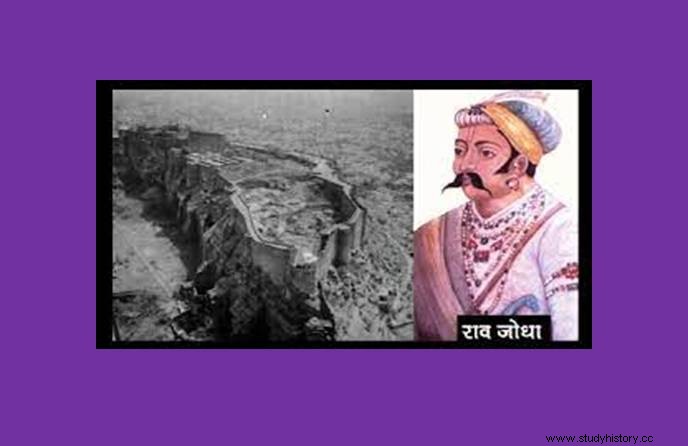
In 1462 AD, three years after the establishment of Jodhpur city, Rao Jodha visited Prayag, Kashi and Gaya pilgrimages. In the fifteenth century, traveling to distant pilgrimages by a great Hindu king was an arduous task. There were many reasons for this. The king was always surrounded by enemies. From the invasions of the Sultans of Delhi, Gujarat and Malwa, to attacks by neighboring Muslim governors, big Hindu kings, and deadly conspiracies by indigenous Hindu vassals and their own princes, it was not possible for the king to stay away from his capital for a long time. Go away On the way too he was afraid of enemies. If a large army went on a pilgrimage with the king, the enemy would have captured his kingdom from behind. Even after all these obstacles, Rao Jodha decided to visit Kashi and Gaya etc. pilgrimages in 1462 AD, then it can be concluded that in the 9 years after taking over the Mandore kingdom again, Rao Jodha had started his own pilgrimage. The position of the state had become very strong and it was fearless from the side of its enemies.
Meet Bahlol Lodi
There is an article in the fame of the Jodhpur state that when Jodha reached Agra, Bahlol Lodi's benevolent Kanh, who was a Rathore of Kannauj, treated Jodha as a brother and respected him in every way and introduced Jodha to Bahlol Lodi. Reu has named this king as Karna. Ojha has raised the question that in those days Kannauj was ruled by Muslims, so how could Kanha or Karna be the ruler there? Reu has written that it belonged to the Rathor family of Kanauj and the emperor had appointed him as the Subedar of Shamsabad (Khor). The Tarite Farishta also describes the appointment of Karna as the Subedar of Shamsabad by the emperor. In our view, this Karna or Kanha may not have been a Rathore of Kannauj, but he was a prominent Rathod chieftain whom Bahlol Lodi had appointed as the Subedar of Khor. With the help of this Jodha met Bahlol Lodi. Jodha requested the emperor to remove the tax from the pilgrims visiting the Gaya shrine. The emperor withdrew this tax and asked Jodha to pay for it, to punish the Bhomis by breaking the two garhs falling on the way. When Jodha was returning from a pilgrimage to Gaya, he fulfilled the promise given to the emperor by breaking two bastions near Gwalior. The breaking of these forts by Jodha is also reported from Ghosundi's article.
Meeting the King of Jaunpur
On his way from Agra to Gaya, Rao Jodha met the emperor of Jaunpur, Hussain Shah. Reu has written that Jodha requested Hussain Shah for the exemption of tax collected from the pilgrims of Gaya and Hussain Shah asked him to punish the Bhomis on the Gwalior side. It is written in some legends that Jodha visited the pilgrimages of Prayag, Kashi, Gaya and Dwarka etc. and while returning, kept his vow by destroying and destroying the forts of the enemies of Hussain Shah.
Political significance of Jodha's pilgrimage
The pilgrimage of a great king was not only a pilgrimage, but also had political purposes. Undoubtedly, the pilgrimage of Rao Jodha also had political purposes embedded in it. Rao Jodha's meeting with Bahlol Lodi and Hoshang Shah during this journey and breaking the forts near Gwalior and punishing the Bhomis there confirms this. Therefore it would not be an exaggeration to say that Rao Jodha's pilgrimage was an important political event in his life.
mentions of Jodha's pilgrimage
Jodha's pilgrimage is mentioned in the V.S. It has come in the article of 1561 (1504 AD). It is written in this inscription that many Pathans were killed by Jodha's sword. He satisfied his ancestors by getting rid of the tax levied on the travelers of Gaya and the scholars there by donating gold in Kashi. Jodha's visit to Prayag and Gaya has also been mentioned in a book titled 'Jaitsi Ro Chhand' by Bithu Souza.
